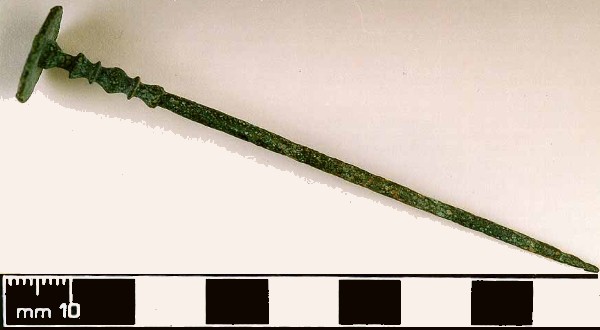|
|
Bronze Pin from Oxford: 1st to 4th centuries |

Pins are one of the commonest finds on Romano-British sites. They were both decorative and functional, used for securing both hair (female) and clothing (male and female). They came in bone (most commonly), bronze, silver and gold. With its slender shaft and flat disc-shaped head, this attractive pin, which is of an unusual type, looks most suitable for fastening clothing.
Very little textile survives waterlogged British archaeological conditions, but we know that Roman Britons, like the Iron Age people before them and the Saxons after, made much use of pins to secure garments, especially over-garments like cloaks and mantles which would always have been a necessary element in the British climate. (Britain under the Empire exported a waterproof cloak called the birrus Britannicus and a woollen rug called the tapete Britannicum - the ancient counterparts of the Barbour jacket and Tartan rug.)
Until recently, no Roman buildings or occupation remains as such had been found on the site of Roman Oxford, but Romano-British domestic finds made periodically confirmed that there were Romano-British houses and farms here. Very recently, Roman buildings have been found near the centre, in Mansfield Road.
© 1998 Oxfordshire Museum Service, Setúbal Museums and the Benaki Museum